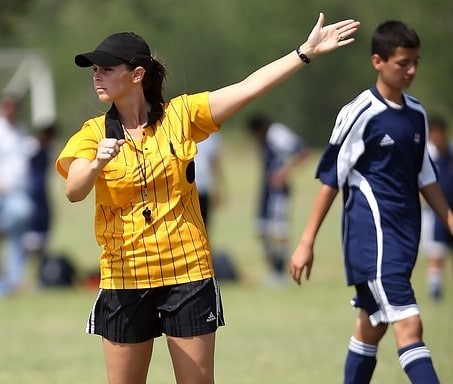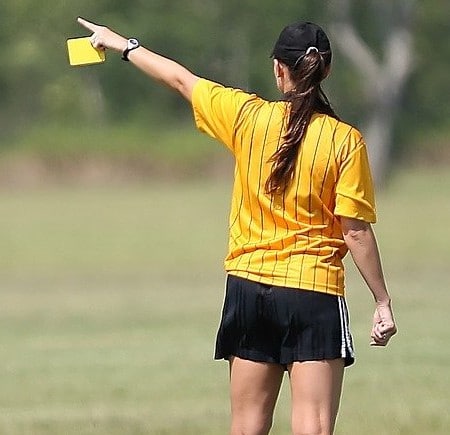A question that has been haunting many soccer players around the world is how do referees communicate with the players on the field?
The referee’s job after all is to control the whole game by communicating with the players of each team on the field, so how do they do that? Here’s your quick answer.
Soccer referees rely mainly on body gestures to communicate with other players on the field. Soccer referees can also use English as the common language of communication between them and other players since English is considered to be a universal language.
It may seem that communication between referees and players is hard if they don’t speak the same language, but this is not the case at all. Any verbal communication between referees and players isn’t necessary at all.
All of what the referee needs to do is to use their gestures and their tools in order to let the other players know about their decision.
So, let’s talk a little bit more about what type of communication is needed between the two.
What form of communication happens between players and referees?
In an ideal situation, the players do not need to talk to the referee at all. The referee will easily communicate their decisions throughout the match using gestures and other actions.
For example, when a foul takes place, the referee will just have to blow their whistle to stop the ball. Then they run towards the place where the foul took place.
Then the referee uses their gestures to indicate what should happen next. For example, if the referee raises their hand forward and directs it towards team B’s goal, it means that team A gets a free kick.

If the referee raises their hand in the air during the free kick, it means that the kick is an indirect free kick.
Whenever the ball goes outside of the field, the assistant referees use their flags to indicate who gets to perform the throw-in or to indicate whether it’s a corner kick or a goal kick.
AND SO ON…
But what about warnings?
How do referees warn players when they commit serious actions against the laws of the game? Do they verbally talk to them?
No they don’t, the referee uses their yellow and red cards to warn the players. The referee just has to raise either card in the face of the player who violated the rules. That’s it. No verbal form of communication is needed at all.
If a referee wants to warn a player, they raise the yellow card. If the referee wants to kick a player out, then they raise the red card and point their hand towards the outside of the field to indicate to the player that they should leave the field.
So long story short. All of the decisions that the referee wants to communicate to other players have their own gestures, and the players need to learn these gestures in order to be able to play in professional soccer matches. Verbal communication is not needed at all.
But… Does that mean that none of the players try to talk to the referees? No. Many players talk to the referee during a soccer match.
If you watch soccer regularly, then you might have noticed that soccer players try to communicate verbally with the referees during every single match.
For example, the players might be angry about a decision that the referee has made and so they try to talk to them in order to let them change their mind or something.
How do players communicate verbally with the referees?
Usually in domestic leagues, both the players and the referees know the language of the country that the league belongs to.
Let’s talk about La Liga for example. If you were lucky to be signed by Real Madrid, then you’ll have to live in Spain, and you’ll have to learn the language even though you’re not from Spain.
The same thing applies to local referees. Usually, the referees used in a domestic league know the language of the country that owns the league.

So, the referees and the players will communicate with each other using the language of the country that owns the domestic league that the match belongs to.
But, what if the referee does not know the language of the players in a certain league?
A great example is the world cup. During the world cup, 32 different teams from different countries around the world will compete against each other.
The referee will certainly not be able to learn more than 20 languages just to be able to communicate with every team on the field.
In such scenarios, the referee and the players usually use the English language.
International soccer referees are expected to learn English. They take English courses. However, they do not need to speak the language fluently.
Learning the basic teams is enough. The English soccer terms aren’t hard to learn.
Terms like Throw-in, free kick, penalty, corner kick and so on are very easy to learn.
These terms are used by the whole world when it comes to soccer. The terms have become universal instead of just being used in English speaking countries.
With that said, referees will usually be able to use simple English terms to communicate with other players on the field during a soccer match.
Thank you for reading this far, here’s a summary of what you have just read.
Referees use gestures to communicate with other players and the usage of verbal communication is not necessary at all. However, the referees do use verbal communication with other players sometimes.
Since almost all of the players and referees know the basic soccer terms in English, then a simple verbal communication between the 2 is possible.

